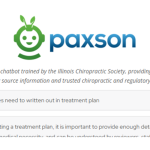
Advancements in A.I. are Combating Healthcare Fraud

My good friend, Dr. Jay Greenstein, has, in my opinion, been at the forefront of changes within healthcare technology. For years, he has been discussing emerging technologies and their impact on the profession. In the last year, he started a private Facebook group to bring together innovators who want to understand and leverage that technology in healthcare. He is a huge proponent of knowing the data behind your practice and owning the data of the profession. Learn more about that here.
It’s no secret that third-party payers know more about our practices than we do. Now, that data is being used to battle healthcare fraud. The National Health Care Anti-Fraud Association estimated that healthcare fraud costs the nation $68 billion annually. (BCBS, n.d.) An article on the Physicians Practice website published February 18, 2021, stated, “In January 2020, the U.S. Justice Department reported that over $2.6 billion had been recovered from lawsuits relating to medical fraud. This figure has been steadily increasing and has exceeded $2 billion annually over the past decade. The National Health Care Anti-Fraud Association estimated that healthcare fraud costs the nation $68 billion annually; however, some estimates place this figure upwards of $230 billion. Fortunately, new technologies are making major strides in the fight against various medical fraud schemes.” (Newell, 2021)
This new technology monitors billing claims and can identify fraud within milliseconds. Using advanced fuzzy logic-based rule sets and dynamic, intelligent profiling, a sophisticated, fully automated, real-time solution can automatically extract claims and reveal potential fraud patterns and improper medical coding. By considering the overall context of a claim instead of just a single line item on a bill or bills, the solution reveals additional incorrectly billed charges, even after a medical bill review company has checked them. These solutions drill down to determine the actual risk for each billed line of a claim based on the specific account information, previous claims, patient profile, and provider history. This new technology can easily detect up-coding, billing for services not provided, and more.
So how successful is this software? According to the article, one software program detected $5.7 million in additional billing fraud for a health insurance carrier after the carrier’s billing service reviewed the claims. Healthcare fraud costs the nation 68 billion dollars a year. What can you do to minimize health care fraud in your practice?
Understand the rules and regulations.
Ensure accurate billing.
Maintain proper documentation.
Create AND follow a compliance plan. (HIPAA, OSHA, OIG)
If you, like many, neglected to stay on top of your compliance program in your practice, get help now! I’ll never forget the day when my business consultant pointed out that for every hour one of my associates was working on our compliance program and not treating patients, it cost me close to $250 an hour in lost revenue. I moved to a third-party compliance company to manage it for me. At the very least, I encourage you to have a third party complete a chart review. You don’t know what you don’t know. Having an expert evaluate your coding and documentation can shed light on areas where you may be losing revenue and exposing yourself to unnecessary risk. Oftentimes, we view compliance as another thing that gets in the way of patient care. In reality, implementing and maintaining a compliant practice is one of the first steps to profitability.

















